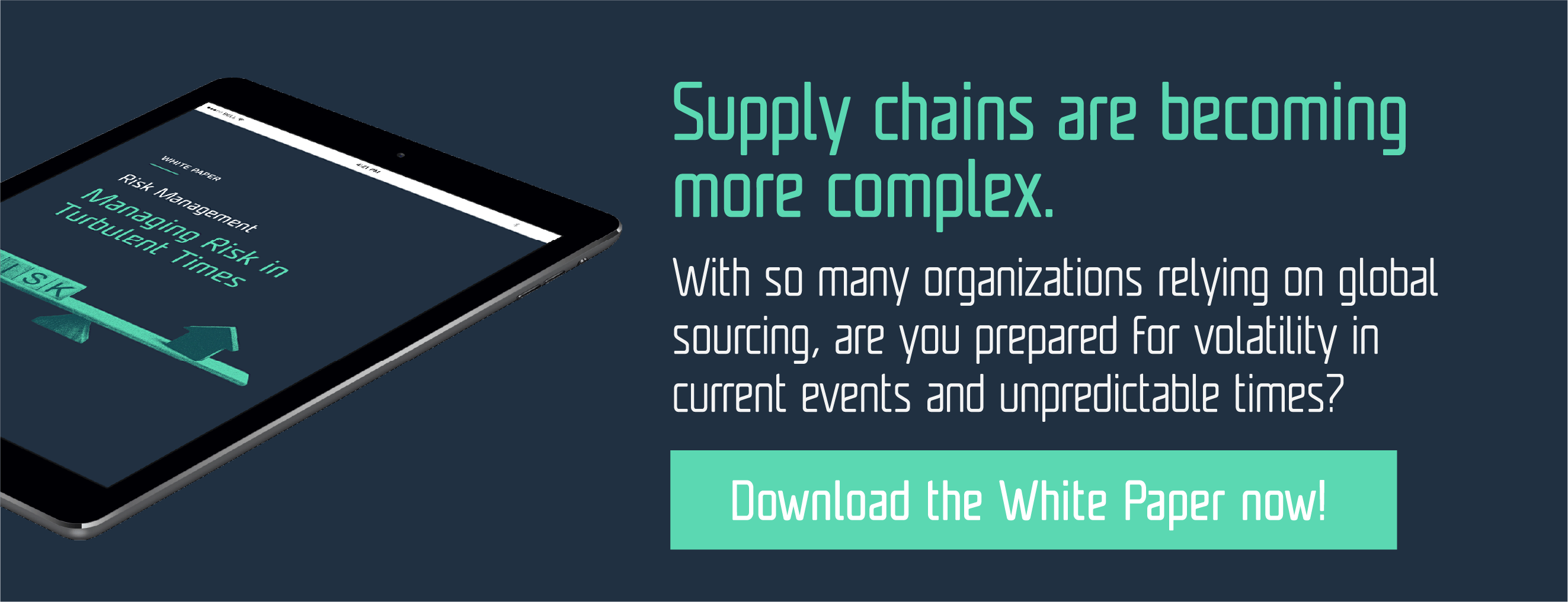Improving Your Supply Chain Risk Management

Before 2020, the global supply chain seemed almost untouchable, a well-oiled machine that kept the global economy turning. Risk mitigation and supply chain resiliency wasn’t the top priority for businesses.
Fast forward nearly three years, and everything we thought we knew has been turned on its head. The pandemic has exposed long-buried vulnerabilities within the supply chain. War and environmental disasters have highlighted those vulnerabilities and shown the world just how tenuous the balance of modern life truly is.
While we’ve come through to the other side of the worst, supply chain managers are starting to look further into their supply chain and logistics network, specifically how to improve resiliency and mitigate risk.
Understanding Risk Management
Put simply, risk management is the measures taken to mitigate both the exceptional and the everyday risks that come with running a business, the goal of which is the reduction of associated costs, minimizing disruptions, and maximizing profits.
Risk management is essential for any company looking to ensure long-term success. Conversely, poor risk management leaves a company exposed and vulnerable to costly disruptions. This can eat away profit margins in the best-case scenario and shut them down forever in the worst. Conversely, poor risk management leaves a company exposed and vulnerable to costly disruptions.
While risk is an everyday part of running a business, how it’s managed and prepared can make all the difference. The question is, where do you begin when attempting to implement a risk management system?
Assessing Your Operational Risks
Risk assessment identifies hazards within your operations and how those risks could affect your business. For example, if a material supplier is no longer accessible to your organization, what would happen to your operations? Do you have a backup supplier in place? How much would this affect lead time and material costs? A risk assessment will provide the answers.
A risk assessment is no small undertaking as it requires scrutinizing not just in-house operations and logistics but that of partners, vendors, and other suppliers throughout the entire supply chain. The longer the chain, the more complex the risk assessment, especially when dealing with companies in other countries that might have entirely different regulations.
Fortunately, some companies specialize in composing risk assessments to help smooth the process. Once identified, risk management professionals can craft a plan to manage those risks best; whether alternative routes, vetting a new supplier, utilizing intermodal transportation, etc.
Having a plan for various events is an excellent step toward mitigating supply chain risks, but there is always the possibility for the unexpected to occur, a black swan event. By its very definition, these events are impossible to predict, which makes them incredibly difficult to anticipate. While difficult to predict, proper processes can help mitigate them, and the best way to do that is by improving your digital infrastructure.
Digitalizing Your Supply Chain for Resiliency and Optimization
There is a reason why digitalization has been a recurring trend in logistics circles for the past few years. One of the most effective strategies for managing risk is ensuring your tech is up to date. Modern-day digitalized systems improve visibility, provide reliable data, and allow for better and more accurate communication between the various moving parts of the supply chain.
The right technology in place at the right time is essential to have the necessary visibility into your supply chain to see what processes are most susceptible to risk and disruption. Visibility and technology offer considerably more benefits than simple risk mitigation. Overall efficiency, asset utilization, and processing time greatly benefit from improved technology.
The yard and the docks are among the most overlooked areas of the supply chain despite being among the most vital to successful operations. One of the best examples of this is utilizing a yard management system (YMS.) as trucks are constantly cycling in and out; not having a proper YMS drastically increases the risk of congestion, delays, and inefficiencies.
How C3 Can Help
Since its founding in 2000, C3 has gained the confidence of clients worldwide and across many industries, including retail, grocery, distribution, manufacturing, and parcel post. C3’s unique products allow customers to maximize the usage of their trailers, dock doors, dedicated yard staff, and physical yard space. C3 Reservations Its web-based dock scheduling system – streamlines the scheduling process by improving dock productivity, expanding visibility on scheduled appointments, and measuring vendor compliance. C3 Yard’s web-based yard management system (YMS) – empowers yard managers by providing visibility on yard assets, optimizing the flow of trailers from gate to gate, and automating yard driver task assignments.
Visit C3 Solutions to request a demo today!

